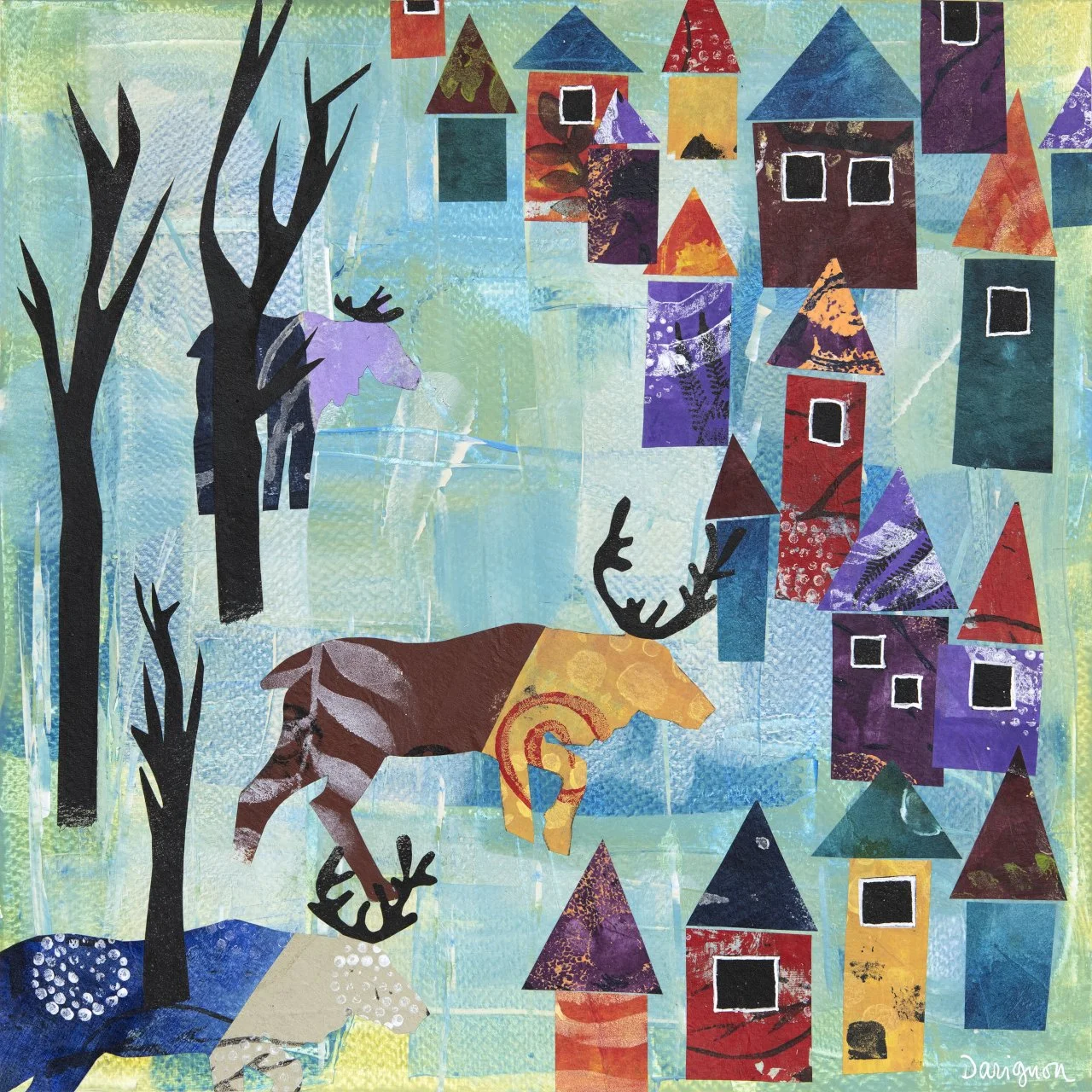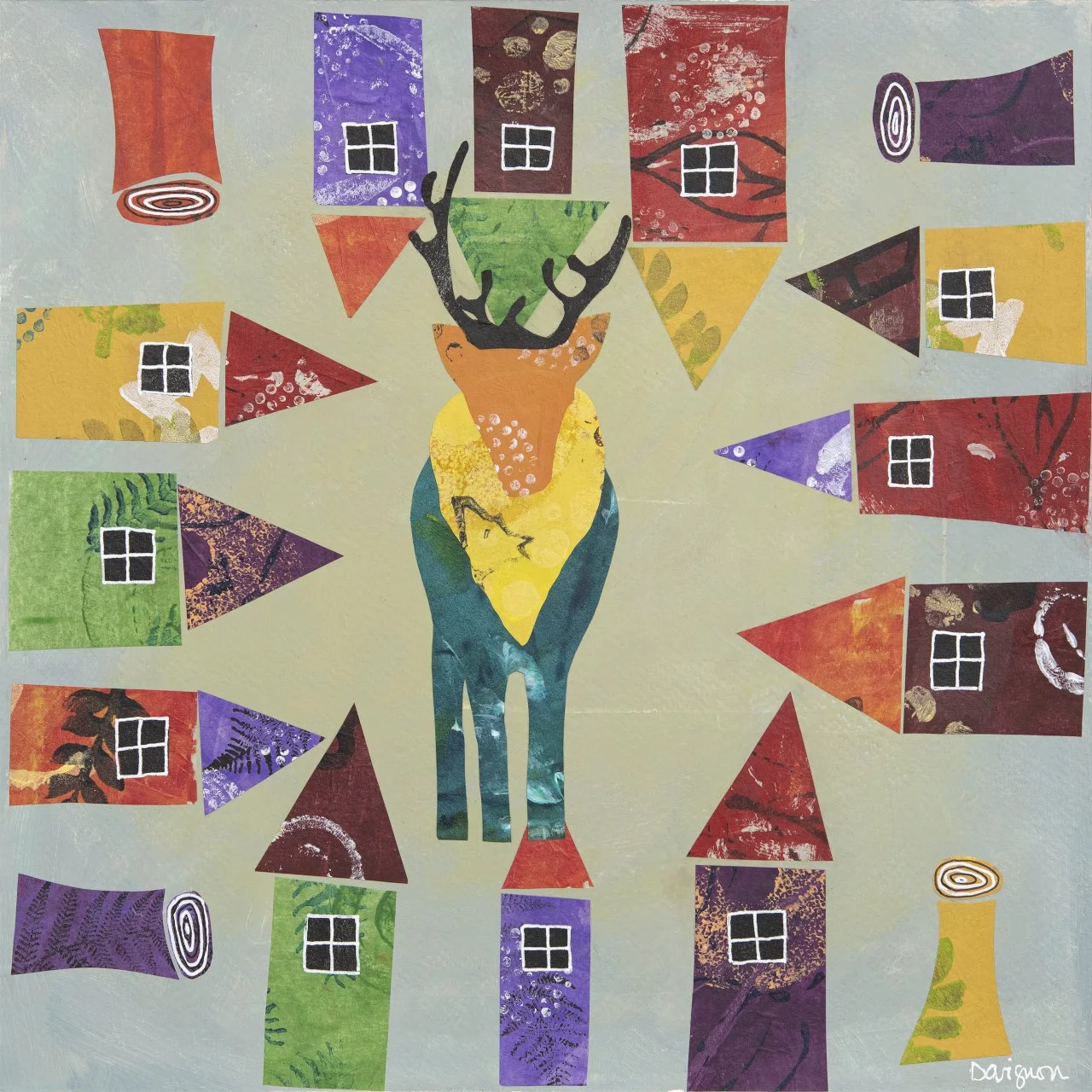Disturbed by human activity, caribou populations in the Gaspé Peninsula, Northern Quebec and the North Shore are declining. This human activity ranges from deforestation, the destruction of their habitat (logging and slash-and-burn) to the transformation of the forest landscape, which increases predation (bears, coyotes and wolves) on calves and adults. What's more, the forest is now too young to meet the caribou's nutritional needs. The decline of caribou in these three regions of Quebec contributes to the risk of extinction of this emblematic animal.
In my work, the caribou are out in the open, making them easy prey for their predators. As with many animal species, human habitat is expanding while that of the caribou is shrinking, leading to the inevitable face-off between animal and human. An encounter that should set alarm bells ringing in our heads and raise questions.
The decline of the caribou
Perturbés par l’activité humaine, les populations de caribous de la Gaspésie, du Nord du Québec et de la Côte Nord déclinent. Cette activité humaine s’étend de la destruction de leur habitat (coupes forestières et brûlis) à la transformation du paysage forestier qui augmente la prédation (ours, coyotes et loups) sur les faons et adultes. De plus, la forêt maintenant trop jeune, ne peut subvenir aux besoins nutritionnels du caribou. Le déclin du caribou dans ces trois régions du Québec contribue au risque d’extinction de cet animal emblématique.
Dans mes œuvres, les caribous sont à découvert, ils deviennent une proie facile pour leurs prédateurs. Comme pour beaucoup d’espèces animales, l’habitat de l’homme s’élargit tandis que celui du caribou diminue, s’en suit l’inévitable face-à-face entre l’animal et l'humain. Rencontre qui devrait faire sonner des alarmes dans nos têtes et engendrer un questionnement.






